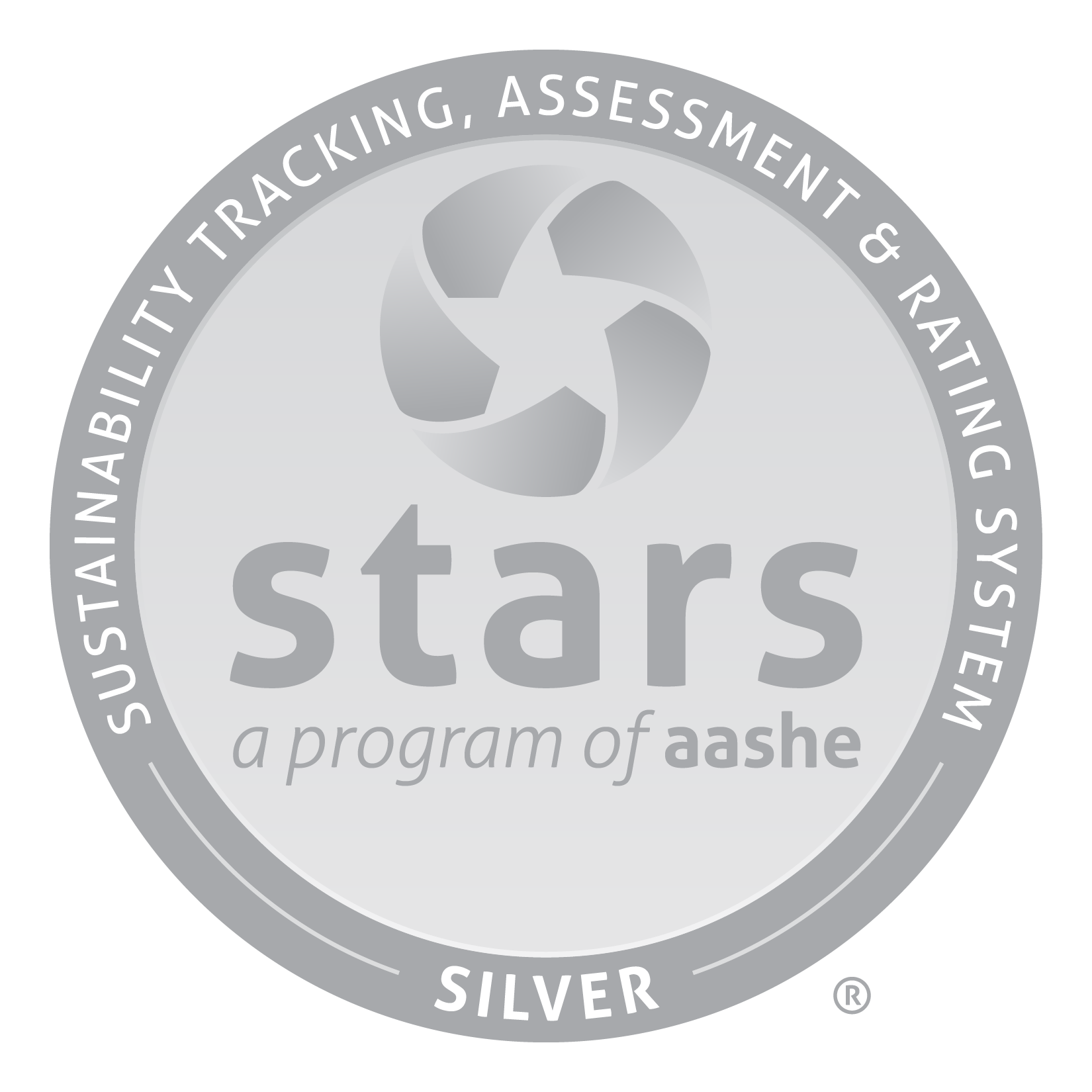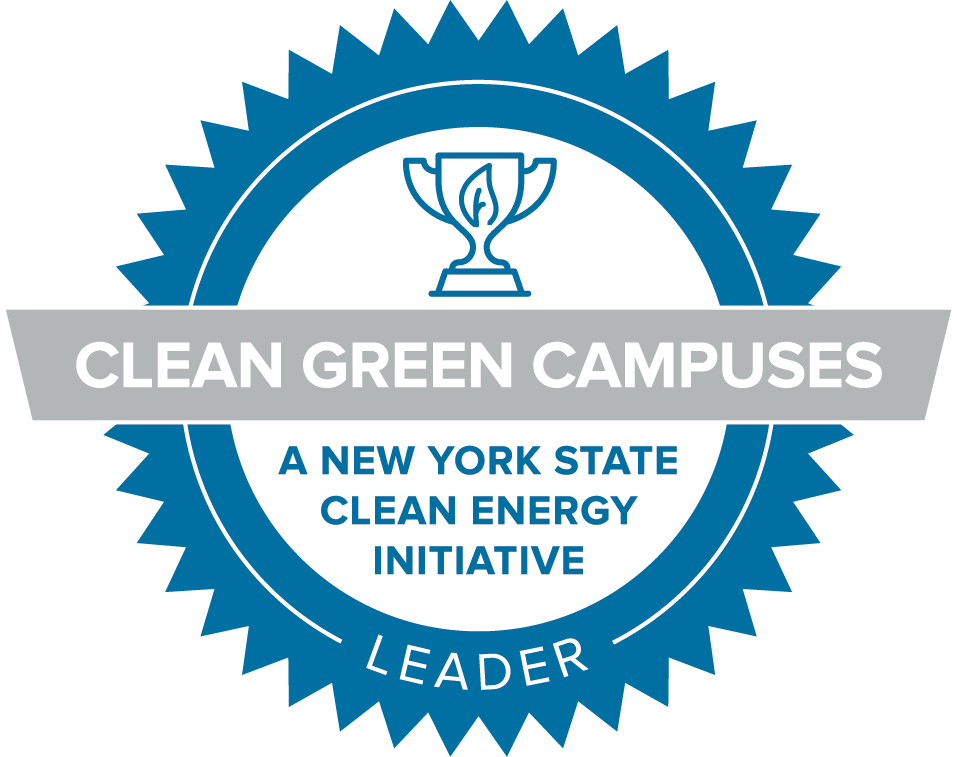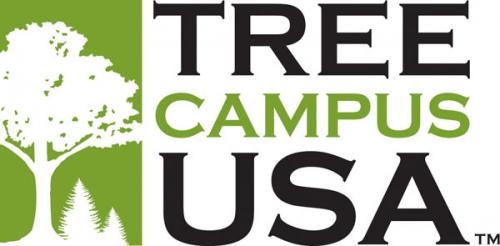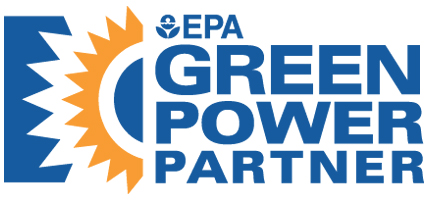Transportation
Transportation ties into many of the United Nations’ Sustainable Development Goals, like the goals of Climate Action and also Sustainable Cities and Communities. The Climate Action goal relates to preventing climate change and curbing greenhouse gas emissions (GHG), while the Sustainable Cities and Communities goal emphasizes sustainable and equitable planning and building (UN SDGs). Sustainable transportation is super important for social equity and to address global climate change. At Skidmore, one of our goals is to reduce our GHG emissions by 75%. As such, we have encouraged the use of public transportation, implemented electric vehicle charging stations on campus, and we are increasing the quantity of hybrid and electric vehicles in the Skidmore fleet! “Dive Deep” into the issue of transportation and why we need to be smarter about how we travel!
We use transportation almost everyday, whether that be a bike, bus, airplane, car, train, or boat. The issue lies in that the traditional versions of all these forms of transportation run on fossil fuels like gasoline and oil, and thus release large amounts of greenhouse gases (GHG) and other pollutants into the atmosphere. In fact, in 2016, the transportation sector accounted for about a quarter of total CO2 emissions globally (WRI). In the US, transportation is the largest contributing sector to CO2 emissions at 28% (EPA). Looking deeper, of that 28%, on-road vehicles made up 75% of emissions. Of that 75% of on-road vehicle emissions, 32.3% came from passenger cars (EPA).
Why is this a problem? The first reason is that the emissions from transportation contain more than just carbon dioxide, a GHG. These “tailpipe emissions” include particulate matter, volatile organic compounds (VOCs), nitrogen oxides (NOx), carbon monoxide (CO), and sulfur dioxide (UCSUSA). All of these emissions contribute to local air pollution, smog, and in other words, these chemicals are what we’re breathing as we walk along the sidewalks in a city busy with vehicle traffic. Particulate matter specifically is responsible for upwards of 30,000 deaths each year (UCSUSA). Additionally, all of these pollutants cause a variety of health problems: VOCs can be carcinogenic, CO blocks oxygen to organs, and NOx causes respiratory irritation (UCSUSA). What’s more, is that the impacts of these pollutants are unequal, as low income and BIPOC neighborhoods are zoned to be in higher vehicle traffic areas, often next to highways, with higher rates of air pollution (Jones et al. 2014).
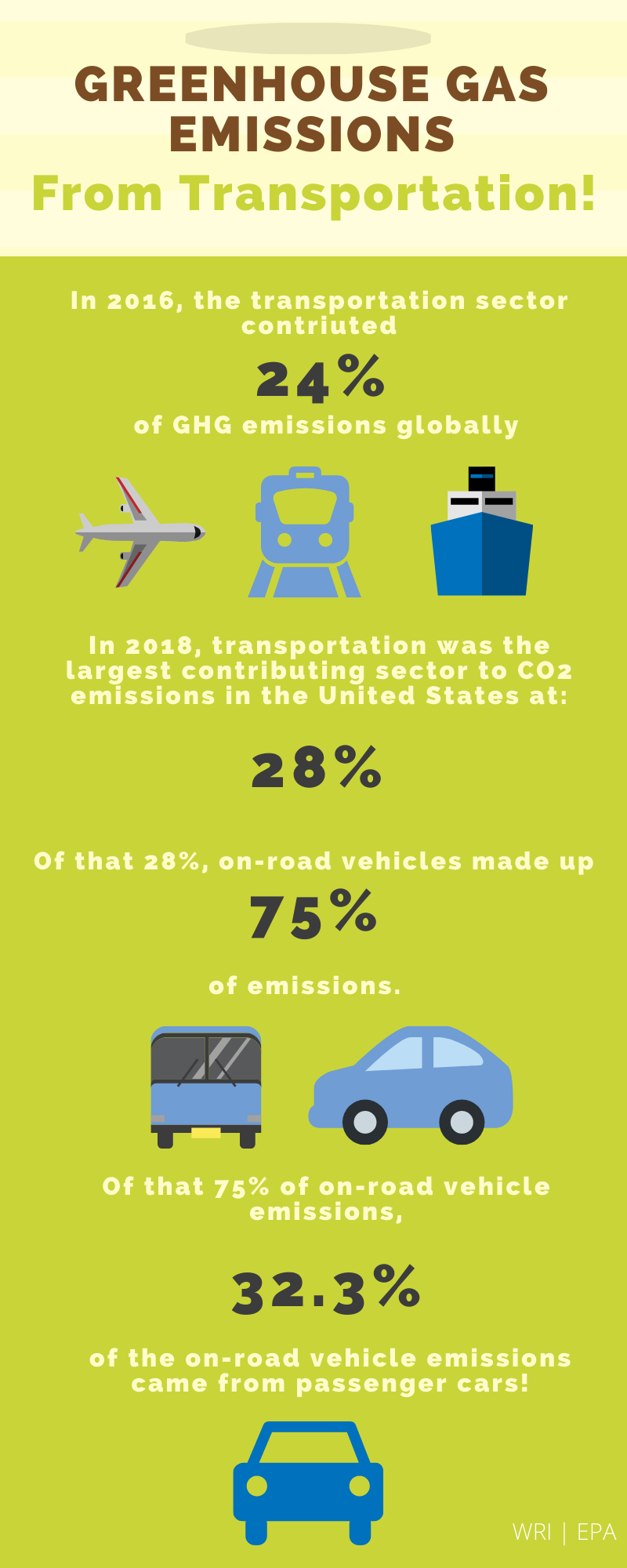
Another problem with transportation is that oil and gas cause several serious issues for our environment. The process of mining fossil fuels creates air pollution, water pollution, and health concerns for local communities (WRI). Also, when we experience oil spills, they cause significant damage to the environment and wildlife affected. In 2010, BP’s Deepwater Horizon rig exploded in the Gulf of Mexico and the oil spill caused the death of over 1 million seabirds, 5,000 marine animals, and 1,000 sea turtles (Wilderness). When burned, gasoline produces highly toxic and flammable gas that contributes to air pollution and climate change (WRI). To make things worse, the effects of global warming and climate change caused by fossil fuel emissions disproportionately impacts marginalized and low income communities around the world. Communities all across the globe are already feeling the impacts of climate change, with heat waves, floods, and extreme weather, and we must curb our fossil fuel use to stop exacerbating this climate emergency.
As mentioned above, air pollution from transportation tends to cause more harm to marginalized communities than the middle class or wealthy. There are also other inequities tied into the transportation system in the US, one being that government policy and funding has made personal vehicles and highways the norm rather than public transit. The majority of federal funds for transportation go to highways and bridges, leaving public transportation grossly underfunded. That means public transit around the US is too often characterized by bus stations and metros with crumbling infrastructure, dated technology and inconvenient/inconsistent access (Femislay Post).
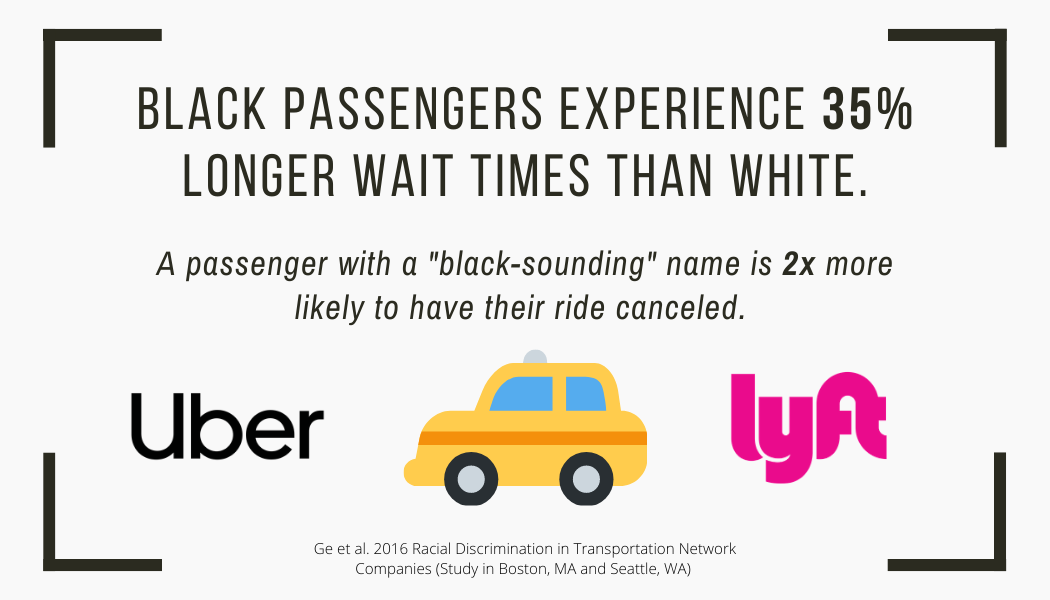
We must understand the injustices in the transportation system to rectify them and build a society where all of us can thrive. For transit that means affordable and accessible bikeways, sidewalks, buses, and metros that are good for people and the planet!
Bike!
- Bikemoreis our free on campus bike share! Any Skidmore student, staff, or faculty can use Bikemore, all you need to do is register.
- The CDPHP bike share offers racks around downtown Saratoga Springs and by Spa State Park. Users can pay for access by the hour or with monthly memberships.
- If you bring your own bike, you can register it with Campus Safety. Simply stop by the Campus Safety Office in JoTo first floor or give them a call for more information.
Walk!
- Not only do walking and biking reduce GHG emissions, they are also great exercise and a way to get sun and fresh air.
- Studies show walking is good for your mental health, physical health, and for communities at large (Harvard Health Publishing)!
- Downtown Saratoga Springs is just about 1 mile away from campus- that means 40 restaurants and a plethora of shops are just a 30 minute walk from the College.
Local public transport!
- Skidmore students have free access to the local Capital District Transportation Authority (CDTA) bus system. There is a bus stop on campus in front of Case Center, and all you need to do is swipe your Skid ID when you enter the bus. The 452 route that runs from Skidmore has multiple helpful stops around Saratoga. Here is the link to the bus schedule and 452 route!
- There is an Amtrak train station in Saratoga Springs just a couple miles from campus. The train is about 3 hours to Penn Station in NYC. Another station in Rensselaer, right outside Albany, offers even more time options.
Carpool: If you do need to use your car, try to carpool as frequently as possible! Skidmore rideshare is a facebook group available to Skidmore students where you can organize carpooling back and forth for winter break or to airports, train stations, etc.
Electric vehicles: Skidmore has Charge Point electric charging stations around campus. They are located in Case Center Lot, Palamountain
Lot, Zankel Lot, and Sussman Village.
Tips for Living in Dorms:
- Take advantage of the bus system! It is a great way
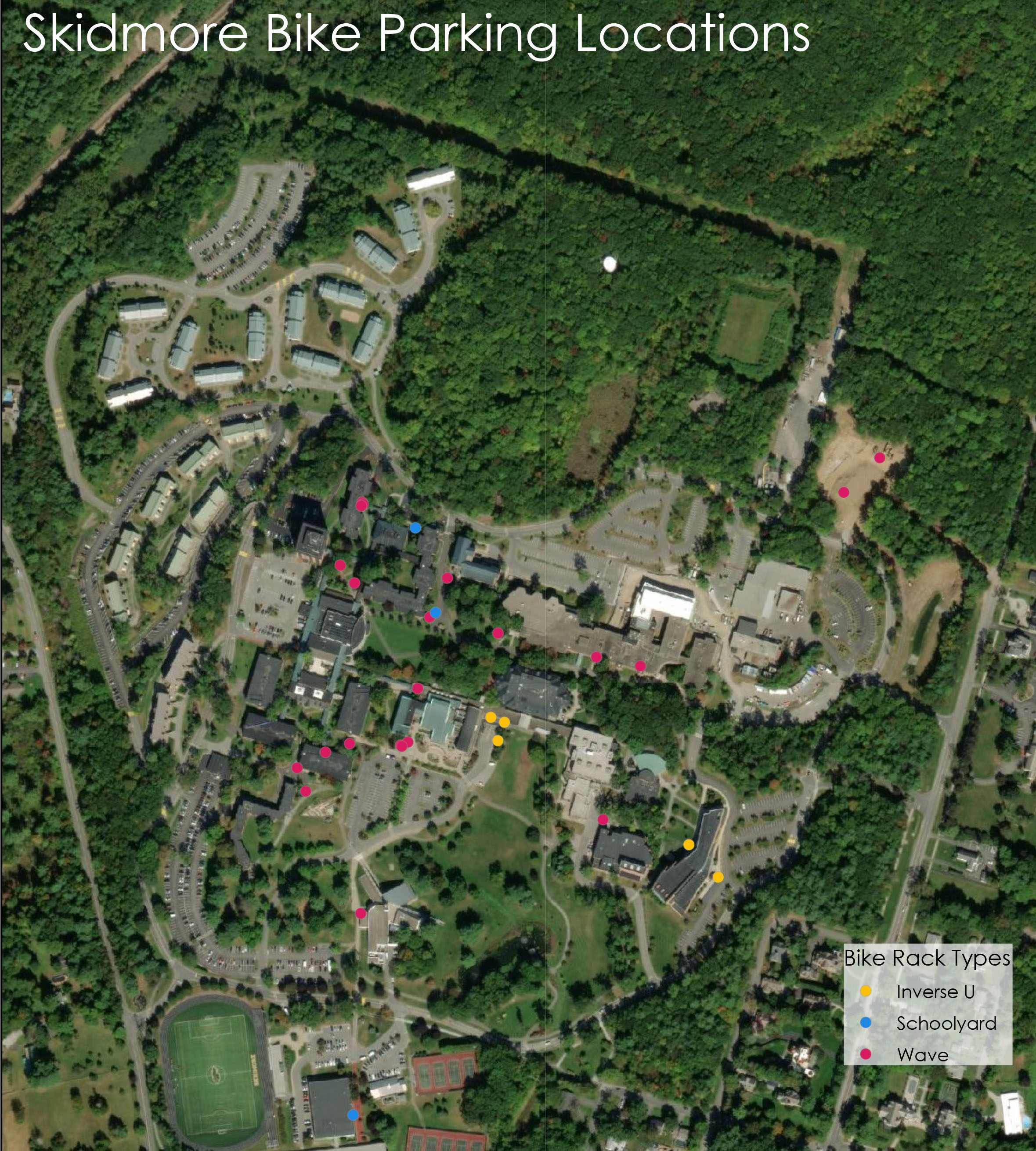 to get into town, especially because many Res Hall residents do not have their own
vehicles on campus.
to get into town, especially because many Res Hall residents do not have their own
vehicles on campus. - Biking is another great option. Bikes can be stored at racks outdoors, and Res Halls
offer bike storage in the basement as well. Click here or click the bike rack map to the right for a PDF copy.
Tips for Living in Apartments:
- Walk and bike as often as you can!
- Indoor bike parking is available in each apartment laundry room. Bike hangers allow bikes to be hung vertically and locked in place.
- Carpool when grocery shopping and use the bus when going into town, be mindful of housemates, friends and classmates who don’t have a car and would appreciate the wheels.
- If you decide to purchase a car, consider looking into hybrid or electric vehicles!
- Bikeatogais a local volunteer-run non-profit working to make cycling more convenient, safe, and accessible in Saratoga Springs. They also have some cool workshops about bike repair/recycling.
- Check out our Transportation webpagefor an overview of Skidmore’s transportation initiatives!
- There’s a lot to explore in Saratoga Springs, by foot or on wheels. Check out Saratoga.com to learn more destinations, trails, and businesses in the city.
